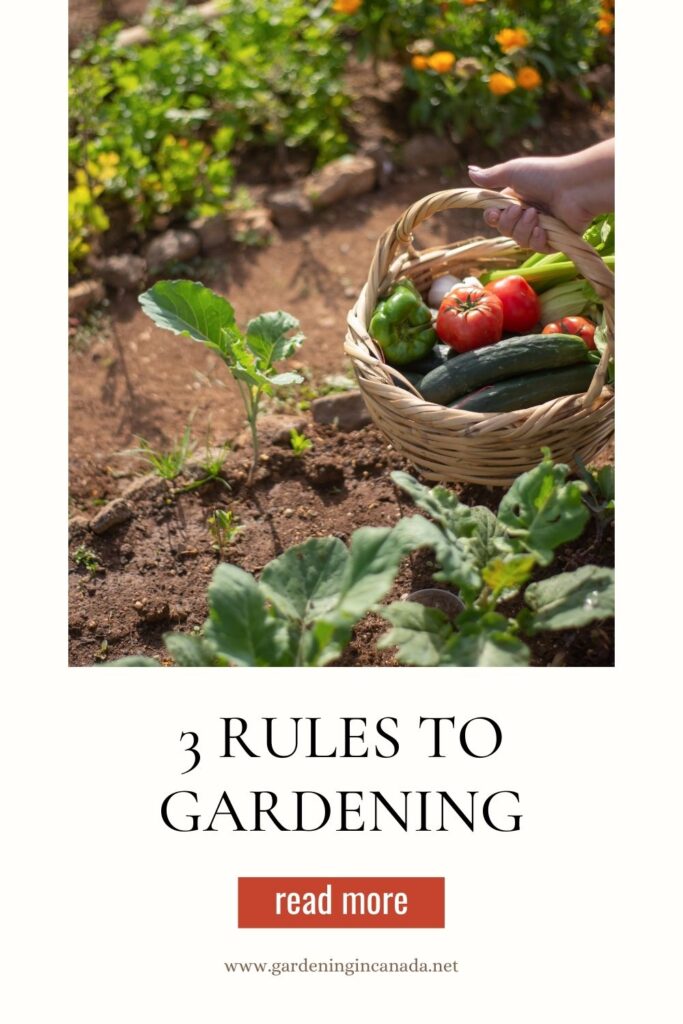- Canada’s Growing Zones Are Changing 2024 - January 12, 2024
- Attracting Wildlife To The Garden - May 16, 2023
- How To Garden Near A Septic Tank - May 9, 2023
The 3D’s of horticulture refers to the three main factors that need to be considered when growing plants: drainage, density, and diversity. Understanding and properly applying these principles can help you create a healthy, thriving garden or landscape.
If you are new to this blog my name is Ashley and I am a soil scientist. I am located in a Canadian Zone 3 and a USDA Zone 4. I write articles, make YouTube videos, Instagram & Facebook posts all designed for Canadians and Cold Climate gardeners using science-based methods. If you are looking for anything specific be sure to let me know in the comments down below.
Drainage For The Soil
Let’s start with drainage. Proper drainage is essential for the health of your plants, as it helps to prevent waterlogged soil, which can lead to root rot and other issues. To ensure good drainage, choose a site with well-draining soil or create raised beds or containers with drainage holes to allow excess water to drain away from the roots.
When it comes to understanding the drainage of the soil you will want to look at the color and texture. The finer the texture the lower the drainage capacity will be. If you are able to make a snake from the soil by rolling it this is a sign you have fine-textured soil. If you are looking for color indications look for blotches of grey or red. These are indications of standing water and therefore poor drainage.
Density Of Plants
Next, let’s talk about density. This refers to the number of plants in a given area. Planting too densely can lead to competition for light, water, and nutrients, which can result in weaker, less healthy plants. On the other hand, planting too sparingly can lead to a less attractive landscape or garden. To find the right density for your plants, consider the size and growth habits of the plants you are using, as well as the size of the space you have available.
Keep in mind that if a plant is a slow-growing perennial that needs shelter planting close together initially can have its benefit. But when it comes to fast-growing annuals make sure you have adequate spacing to allow for appropriate sun and water capture.
Diversity OF Plants
Finally, diversity is an important factor to consider when planting a garden or landscape. By incorporating a variety of plant species, you can create a more resilient, sustainable ecosystem that is better able to withstand pests, diseases, and environmental stressors. This can also help to create a more visually interesting and diverse landscape.
This also comes into play within the same lines of species. You will want to consider diversity in tomato varieties to help ensure a harvest. For example, if you suffer from blight the addition of early, mid, and late-harvest tomatoes is going to be important. This also goes for varieties of legumes that are heat resistant and are not.
To apply the 3D’s of horticulture in your own garden or landscape, start by considering the specific needs of the plants you are growing. Take into account the drainage and soil conditions, as well as the size and growth habits of the plants. Plan your plantings carefully, considering the density of the plants and the overall diversity of the ecosystem you are creating. With a little planning and attention to these key factors, you can create a healthy, thriving garden or landscape that will thrive for years to come. So, these are the 3D’s of horticulture and their importance in gardening and landscaping.

